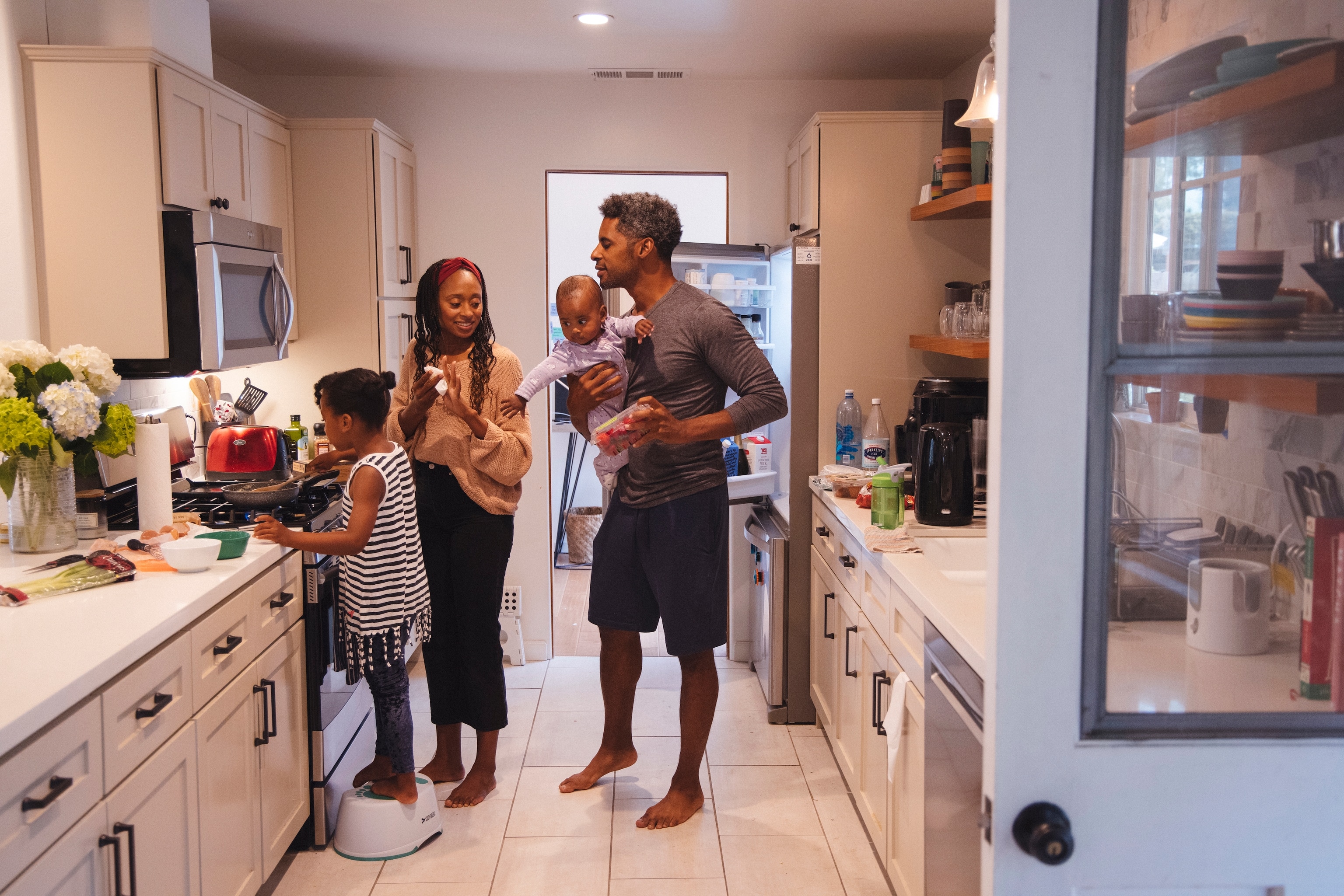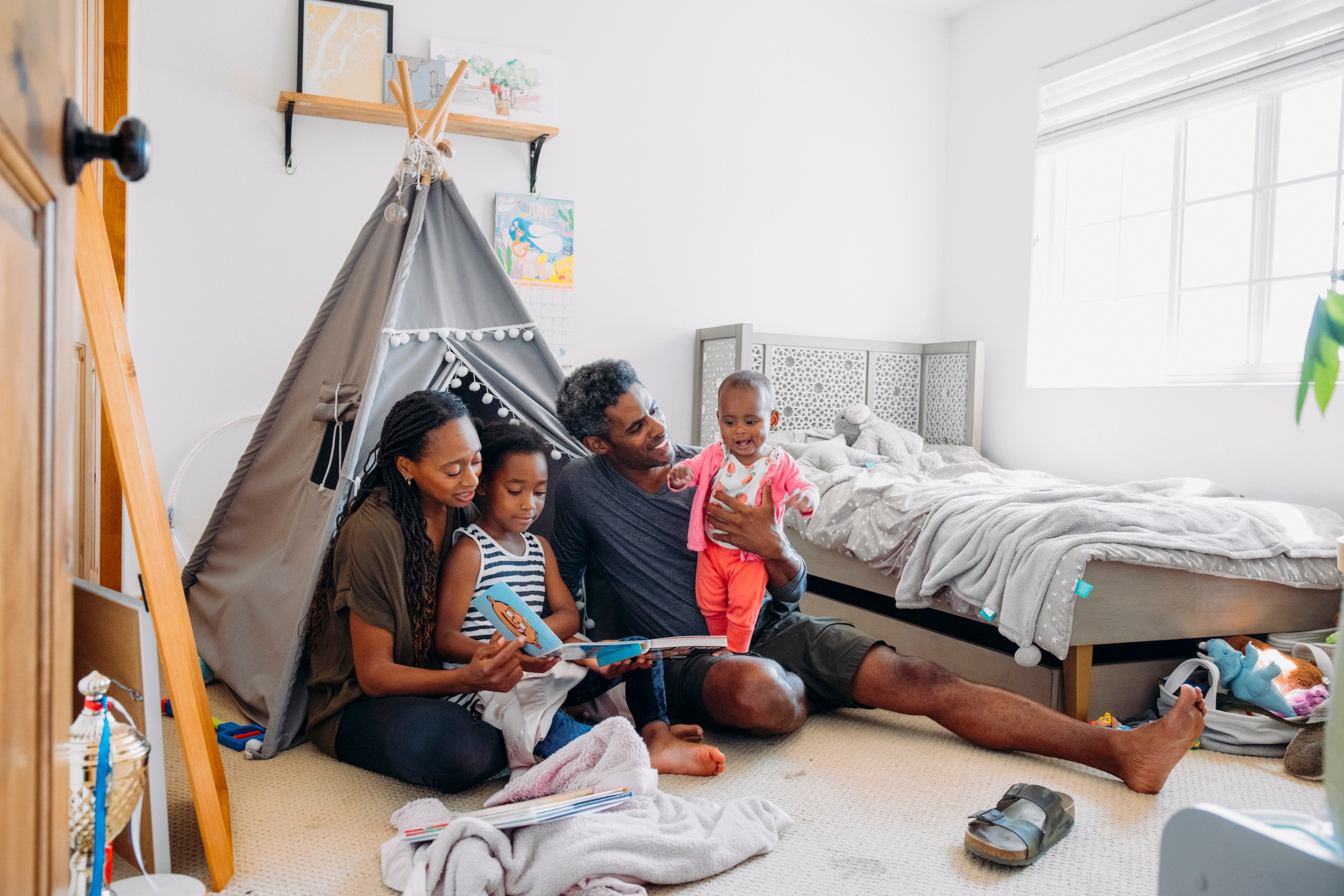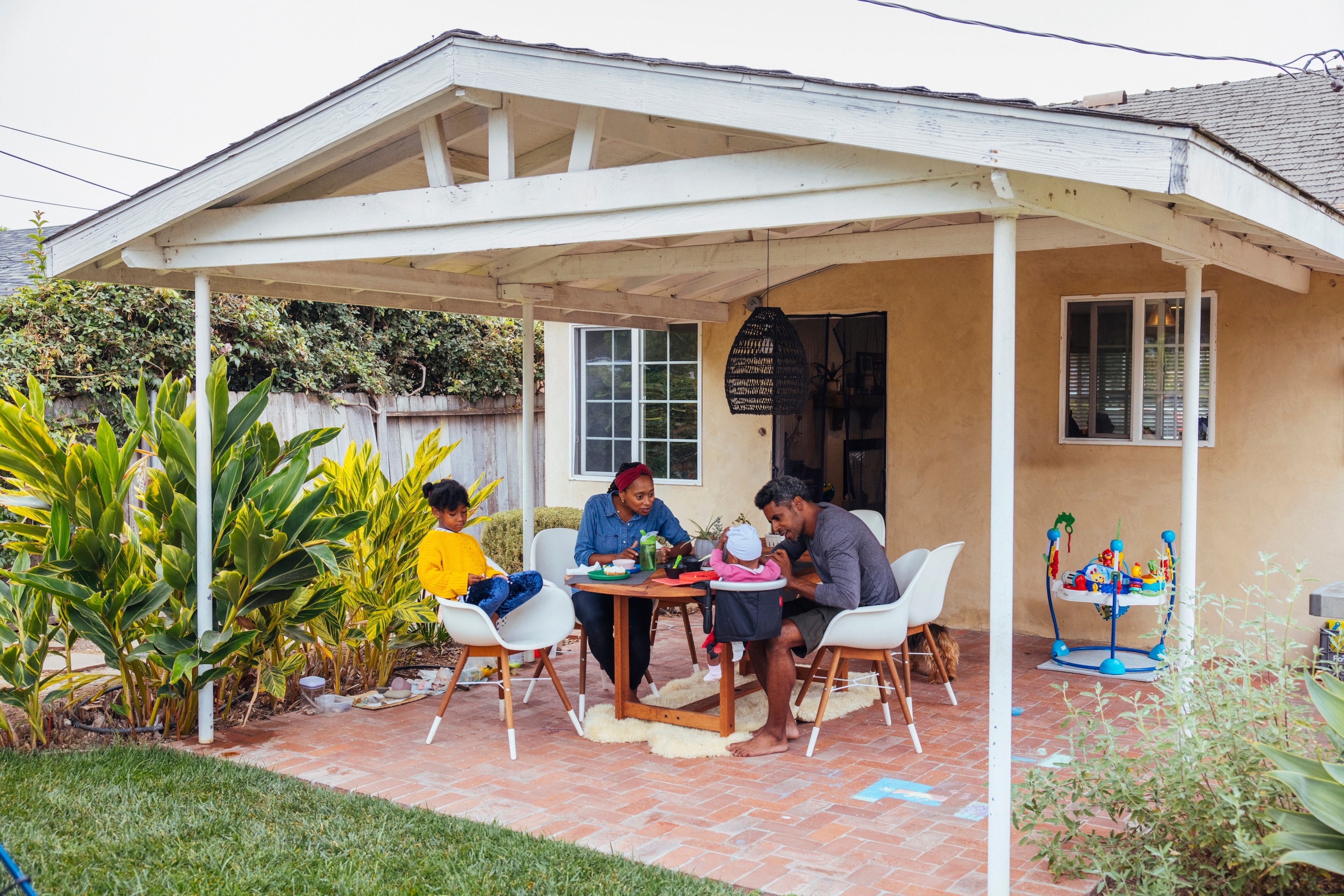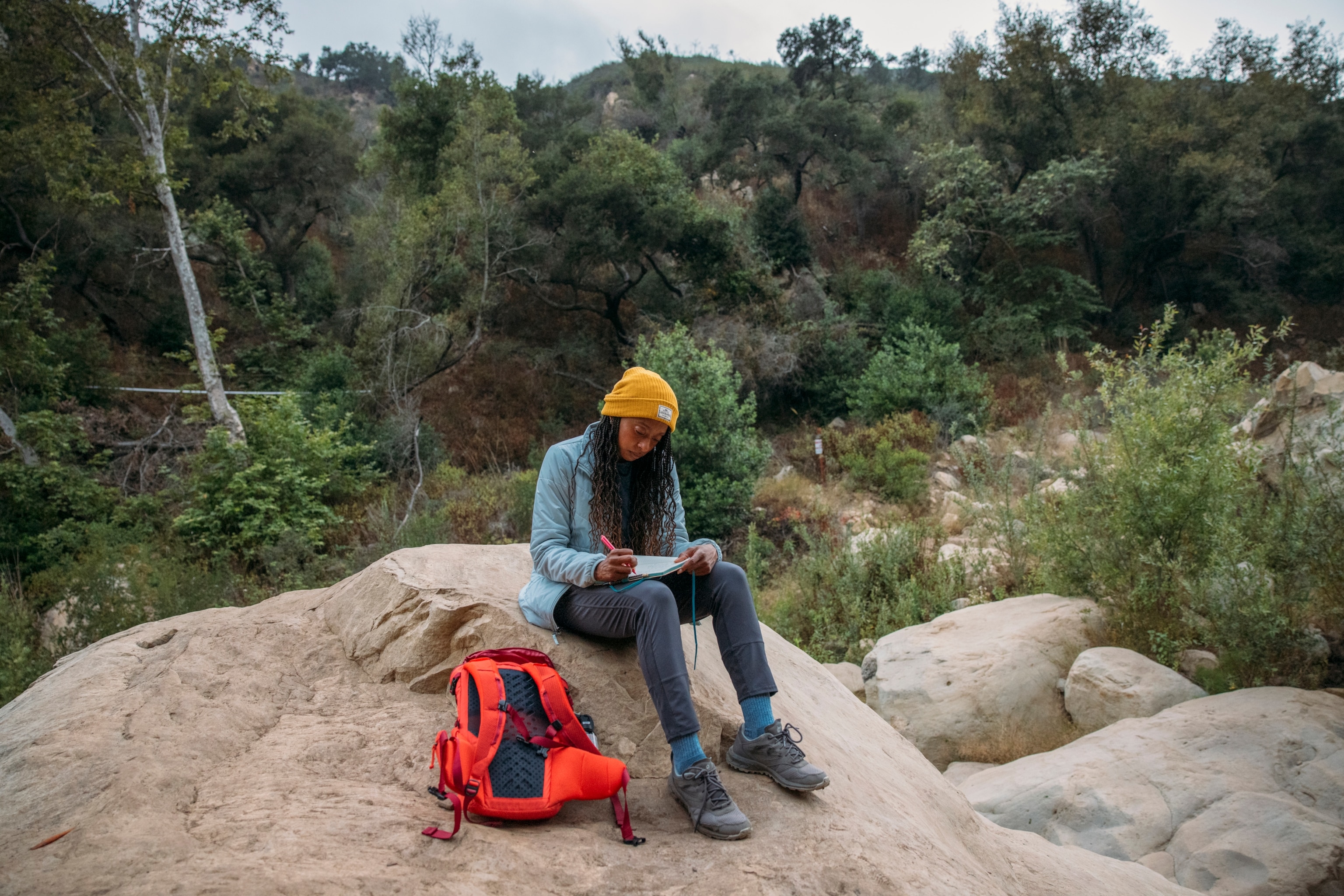Seeking a safe haven to grow a family
The events of this past year and a half inspired a wildlife ecologist to follow her instincts.
When wildlife ecologist and National Geographic Explorer Dr. Rae Wynn-Grant wrapped up her final pre-pandemic research project, she never dreamed that the topic—grizzly bears returning to their ancestral home—would so closely parallel her own family’s experience. Wynn-Grant, a self-described “city girl,” says she had lived her entire adult life in urban apartments. Then, COVID19 hit the United States, and her vision of where and how she wanted to live and raise her daughters changed dramatically.
“One of the things I study in my work is the homes that wild animals make, in particular, mother animals and the dens where they nurture their offspring and grow their families,” says Wynn-Grant, who discovered she was pregnant with her second child at the beginning of the pandemic. “Female animals raising offspring need a safe space… It’s not so different than us human beings out in our version of nature.”
Wynn-Grant’s pre-pandemic image of a safe home, she says, was an apartment on an upper floor (so no one could “climb in through the window and break in”) in a building with really good security. In early 2020, both Wynn-Grant and her husband, filmmaker Dave Grant, had such apartments: she in Washington, D.C. with her then four-year-old daughter, and he in Manhattan. The couple had just talked about Grant relocating to Washington, D.C. sometime in the future when the pandemic fast-forwarded their timeline and totally altered what they needed their home to be.
If you had asked me a couple of years ago what is home, I probably would have said it’s the place that I come back to at the end of the day or the end of a trip. And today, it’s my whole place, my whole world.
Dr. Rae-Wynn Grant
Wynn-Grant’s reimagining of what home means to her is part of the cosmic shift in the meaning of home sparked by the pandemic. Since the first COVID shutdowns began, home became the center of our lives in a way it never had before. And, based on the results of current real estate-related studies, such as A Glimpse into the Future of Home, a survey of recent and future homebuyers commissioned by CENTURY 21®, all indications are that home will remain central to everything we do for the foreseeable future.
Now and moving forward, homeowners and future homebuyers expect their home to wear a variety of hats: residence, refuge, workspace, classroom, workout space, place to socialize with friends and family.

Wynn-Grant initially tried to reconfigure her apartment to fit this new multitasking description, but, with her daughter’s pre-school shutdown, cases of COVID19 rising in her building, her own work shifting from out in the field to inside her home, and a new baby on the way, she says her reasons for wanting to live in a city were quickly shrinking—as was the space in her apartment.
“It was so challenging to be cooped up like that,” she recalls, adding that pandemic life made a big city seem like the worst place for her family. “I can reflect now and see that I was making an instinctive move. My pure, raw animal behavior was really surfacing. I realized that I needed safety, security, resources, and happiness for me and my offspring.”
So, Wynn-Grant and her husband decided to make a monumental life change. They traded their subway passes for a car and moved—sight unseen—to Santa Barbara, California where they are renting a three-bedroom home. Wynn-Grant was born and partially raised in California, so, much like the grizzly bears she studied before the pandemic, her cross-country move marked a return to her ancestral home. It also made practical sense. Being in based on California’s Central Coast puts Wynn-Grant closer to the wilderness spaces in the West where she conducts research and, more importantly, she says, makes it financially possible for her to raise her children in a freestanding house that fits what matters most to her and Grant right now.


“As a mother, I knew exactly what would make me feel comfortable and capable of being a professional and a scientist, and also a mom and a present parent,” Wynn-Grant says. “And that was this revolutionary new life in a home with a significant backyard where our dog and our kids could run around.”
Wynn-Grant wasn’t alone in craving her own piece of the outdoors when the pandemic disrupted “normal” life. According to the CENTURY 21 survey, two of the top motivators for moving in the last year were an outdoor space for entertaining (75 percent) and more land or a bigger yard (66 percent). In addition to providing more room to spread out, survey respondents who prioritized outdoor space said they wanted the benefits nature affords, such as restoring the sense of home as a sanctuary.
The image of home as a safe haven from the outside world really resonates with Wynn-Grant now. “Home is not just a place to play and be active but also a place to rest,” she says. “It’s very important. We take a lot of naps, but we also sing and cook and create together.”

Thanks to the expanded indoor-outdoor space Wynn-Grant and Grant have in their new home, Wynn-Grant has been able to carry on her parents’ tradition of a nightly family dinner. “One of the highlights of living here is eating an early dinner outside,” she says. “We have a couple of places that we have constructed for the purpose of gathering as family…just getting together eating and drinking talking to one another.”
Although open floor plans, which make it easy for families to gather, declined in popularity during the pandemic (due to the sudden need for remote work and school spaces) they’re still the preferred layout for future homebuyers. In the CENTURY 21® survey, an open floor plan topped the list of desirable home features with 66 percent of future homebuyers surveyed naming the open layout as their No. 1 priority.
While not a top factor in homebuying decisions just yet, recent research also indicates that sustainability is emerging as a post-pandemic focus for homeowners and future homebuyers. For Wynn-Grant and her husband that future is now. One big reason why they chose their current rental home, Wynn-Grant says, is its location in a walkable neighborhood connected to a bike path.

“The bike path snakes all through the town and goes directly to UC Santa Barbara where I am a research faculty member,” Wynn-Grant adds. “For the first time in my life, I’ll be biking to work and kind of living the principles that I preach about as biologist in terms of being sustainable and being friendly to the Earth.”
Being a biologist also makes Wynn-Grant curious about how our collective vision of home might change now that the world is reopening, and post-pandemic life seems within reach. “We as people are not necessarily locked into this new way of life,” Wynn-Grant says, reflecting on the relocations and lifestyle changes sparked by the pandemic. “I think we’re all looking for balance. So, I’m really interested how we as a society keep evolving and keep changing into whatever fits us best from moment to moment.”